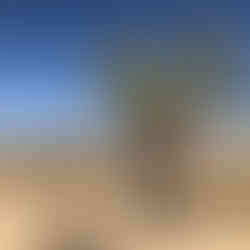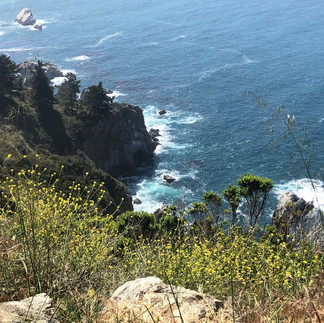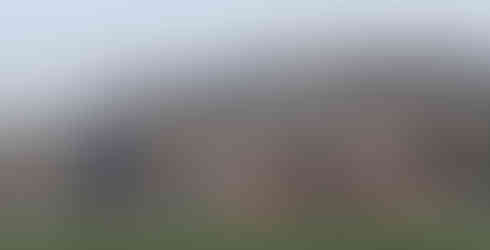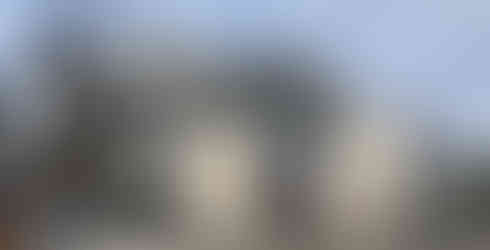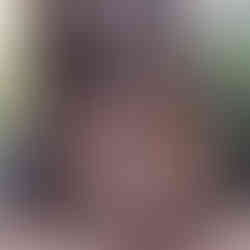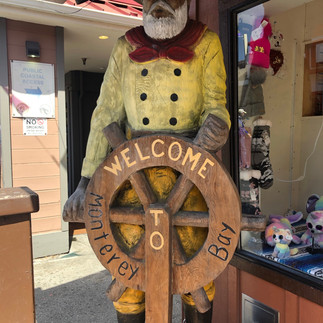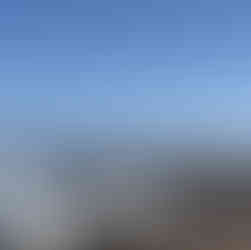
With 9 national parks, 840 miles of coastline, mountains and deserts, and an average of 284 days of sunshine- it’s hard to beat the vacation options available in California. My daughter and I emerged from the Minnesota winter hibernation, paired with a light at the end of the tunnel for the global pandemic, and grabbed a fleeting opportunity to spend some quality time together in California. There are times when it’s impossible to get the whole family’s schedules coordinated for a trip, but there is real magic in a getaway for a mother-daughter--- or really any two family members for that matter. A month later, and I'm still reveling in the wonderful trip we had.
Ambitious 9-day itinerary
We planned an ambitious 9-day itinerary in early May, covering three national parks, time along the ocean, time in both LA and Monterey, and no time for lollygagging around. Note, I often tap into TripAdvisor’s forums for advice on trip planning and most of the comments regarding this itinerary cautioned about all the driving. It was absolutely fine for us, but maybe too much for some folks. When you live in the middle of the country as we do, driving for 7 hours to get to a vacation destination comes with the territory. Heck, while living on the Gunflint Trail, Mazzy was used to driving for 2 hours roundtrip to get groceries or 6 hours one-way to come home for the weekend. As long as you have a few good podcasts and make sure your tunes are downloaded, the time will fly by. One thing to note is that we did stay several nights in most locations--- so the big drives were focused on the days between the destinations and not spread out evenly over every day.
Itinerary:
Day 1 afternoon- fly into LAX and stay in Santa Monica for 2 nights. Spend evening and Saturday exploring LA.
Day 3- Drive to Palm Springs, drive through some of those cool modern home neighborhoods, then head to Joshua Tree National Park (JTNP).
Stay 2 nights at a truly unique camper in Yucca Valley and explore Joshua Tree National Park.
Day 5- Drive to Sequoia/Kings Canyon National Park (commonly referred to as SEKI).
Spend 3 nights in the park lodges and exploring.
Day 8- Head toward the coast and stay in Monterey before heading back down to LA on Highway 1 through Big Sur.
Day 9- fly back home.

The trip was planned around the goal of seeing a large variety of landscapes- ocean, desert, mountains, and valleys. Reflecting on the itinerary afterward, Mazzy and I discussed what we might change with the benefit of hindsight. We both agreed that we would have skipped the second day/night in LA (with no museum to visit, it felt like there was too much time in this crowded city) and added an overnight along Highway 1 somewhere in the Big Sur area or a night in Palm Springs with more time to explore. The time allocated to both JTNP (1.5 days) and SEKI (2.5 days) was right on. There was a lot of driving (1530 miles to be exact) but there was a lot to see between our stops—mountains, vineyards, orange, and lemon orchards, as we were traveling through the fruit basket of America.
I loved the contrast between the desert and the high Sierras, the weirdly wonderful Joshua Trees, and the mighty majestic Sequoias, all while under deep blue skies with hardly a cloud in sight. The forgotten raincoat was not needed, neither was the stocking cap and gloves. We knew we’d have a big contrast in temperatures, with the Palm Springs areas being in the '90s and Sequoia/Kings Canyon down to the ’40s at night. But our timing was good, missing the snowstorm in SEKI the week before and avoiding the extreme heat in JTNP---and thankfully, missing the crowds at both places.

Los Angeles
(1.5 days, 2 nights)
When in LA, I love staying in Santa Monica because being near the ocean is something you crave when you live in the middle of the country as we do. There is something special about being able to take a morning run along the water, a late afternoon nap in the sand lulled asleep by the waves, or to walk along the beach watching the sun disappear behind the Santa Monica Mountains with palm trees and the pier in the foreground.
The thing you need to be ready for in Santa Monica is the masses of people, especially on a weekend. Anywhere near the pier or the 3rd Street Promenade is extremely crowded, especially in the evening after sunset. In hindsight, we needed to have restaurant reservations because, with fewer restaurants and social distancing following the pandemic, you can’t just pop into a decent place for dinner. The reward for this kind of spontaneity is a table at California Pizza Kitchen on a Saturday night (a sad, but true story).
Things we did:
Hike up to Griffith Observatory: We started Saturday morning by a hike up to the Griffith Observatory. The weather was a lovely 70 degrees but the sky was a bit smoggy/hazy so views from the top weren’t spectacular as they typically are but we still enjoyed walking around the outside of renovated Observatory (the building was closed due to pandemic) and the hike from the Greek Theater parking lot to the top of the hill.
Drive around Hollywood Hills: We cruised around the Hollywood Hills on Mulholland Drive and randomly drove through the narrow streets that wind through the hills. It’s a bit like wandering through a maze with glimpses to houses and pools like the ones often featured in movies.
Hollywood Boulevard. In addition to checking out a work project site of mine on Hollywood Boulevard, we strolled along through the terrazzo stars embedded in the sidewalk and past the Mann Chinese Theatre. I had never done this typical tourist thing and quickly realized that I wasn’t really missing anything.
Disney Concert Hall and The Broad Art Museum: These institutions are located in the same downtown area. Both were closed due to the pandemic but still deserved a drive-by. They are definitely worth a visit when open.
In-and-Out Burger: This classic California fast food joint requires patience as the lines for the drive-through are long. The much-anticipated cheeseburger did not live up to the hype, unfortunately. The thin hamburger patty on a thick bun was underwhelming—but perhaps the double patty option has a better meat-to-bun-and-other-stuff ratio.
Venice Canal Historic District: We needed to walk off the In-and-Out Burger meal, so we headed to the Venice Canals and wandered along the man-made canals lined by unique homes. Created in 1905, the area had fallen into disrepair, with some canals filled in until renovated in 1993. The area is now desirable and expensive to live in. We enjoyed seeing the homes integrate the outdoors and embrace the unique setting.
Nap on the Beach: Nothing beats a nap in the sun on a sandy beach when emerging from winter hibernation!
Santa Monica Pier and 3rd Street Promenade: These are high-energy, high-crowd areas.
Sunset along the beach in Santa Monica: Even with a hazy, smoggy LA day, the sunset viewing from the Santa Monica beach is really quite amazing. Watch the sun dip behind the Santa Monica Mountains with the Ferris wheel and the rollercoaster of the Pier and palm trees in the foreground can’t be beaten.
I realized that one of the things I love most about Los Angeles is the museums- the Broad, The Getty, Getty Villa, LACMA, etc. and the few that were open had very limited and impossible to get tickets. These places are slowly opening back up and the LA experience will be better for it.

Palm Springs
(2 ¼ hours from Santa Monica depending on the traffic getting out of LA)
On our way from LA to Joshua Tree, we planned for a quick drive around Palm Springs. This desert oasis is a mecca of modern architecture and houses and amazing neighborhoods that don’t even feel real. As an architect, I can imagine coming back here to do some serious exploring of these really wonderful neighborhoods with all these modern gems- or even better yet, visiting during Modernism Week.



We jotted down a few addresses ahead of time to organize our drive and get in the right neighborhoods and then just drove around, enjoying the modern vibe. Here's one source of info for a self-guided tour.
We started at one of the Wexler Steel Houses designed by Donald Wexler and Ric Harrison at 290 E. Simms Road.
The Alexander/ May House by Edward Fickett- 424 West Vista Chino
Marilyn Monroe House- 1326 Rose Ave (not great architecture- but interesting great neighborhood)
The Dinah Shore Estate by Henry Wexler- 432 Hermosa (note, you can actually stay at this house. Rates start at $3750/ night. https://www.432hermosa.com/)
The Alexander House by William Krisel- 1070 Apache Road
The Irving Allen House by William Krisel- 1840 Caliente Drive

Joshua Tree National Park
Of course, we expected to see the weird and wonderful trees in Joshua Tree National Park, but what we didn’t expect was the giant boulder and rock stacks that looked like aliens were trying to organize the landscape. This was our first real desert experience and it was a fascinating world where the Mojave and Colorado deserts converge. See here for a more detailed blog post on JTNP.
We spent 1-½ days in the park and for us, that felt like the right amount of time to get a good taste of what Joshua Tree has to offer--but there are certainly many hikes we didn't do and things we didn't see that could warrant a much longer stay.
We entered through the south park entrance (Cottonwood Visitor Center) and made our way to the Cottonwood Spring Oasis. This is a very short walk to a grove of Fan Palms that encircle the lush vegetation around the spring. Entering this oasis “room” feels like a secret hideaway.
Other places we explored:
Cholla Cactus Garden
Ocotillo Patch
Hemmingway’s Buttress
Hidden Valley
Keys View
Barker Dam
Jumbo Rocks campground
Skull Rock
Luckily many of the hikes were short and we were able to still see a lot even though the temperatures were reaching the mid-80's in the afternoon.
Lodging and Dining near JTNP

We stayed in Yucca Valley at a very sweet Airbnb, a 1951 Spartanette camper- Silver Bell Bungalow. This was SUCH an incredible experience to be in this wonderful vintage camper, in the desert.
The Spartan Aircraft Company in Tulsa was founded in 1928 and switched to trailer coach manufacturing after WWII. These trailers were considered “the Cadillac” of trailers. The camper with riveted aluminum on the exterior was lined with stained and curved plywood on the inside. Featuring all the original appliances, fixtures, and bathroom- this vintage camper was in remarkably good shape and was just perfect for the two of us. The outdoor tarped “front porch”, chairs and fire table were well-used by used by us in the evenings. I highly recommend this unique Airbnb. But if you can’t get a coveted spot in this camper, there are many other unique glamping experiences in this area.
The drive from JTNP to Sequoia is over 5 hours- but takes you through some amazing orange, lemon, or olive tree groves, vineyards, and other crops.

Sequoia & Kings Canyon Nation Parks (SEKI)
(5 hours and 10 min drive from Yucca Valley)
Established as the nation's 2nd national park, Sequoia National Park is home to the majestic giants, the sequoia trees that live over 3000 years. The adjoining Kings Canyon National Park was established 50 years later and has been operated together with Sequoia since after WWII. Together, they are commonly referred to as SEKI. The giant sequoias are the main event but some amazing canyons and vertical rock similar to what you might see in Yosemite, without all the people.

To see a more detailed blog post on SEKI, see here.
We really loved these two parks and the amazing scenery. It's really hard to capture the magic of the tall sequoias and the dramatic rock faces in some of the valleys in photos, but those powerful experiences stay with you.
Here are some of the things we did:
Hike the Big Trees Trail (1.3 miles)/
Hike up to Moro Rock and get a panoramic overlook
Take our pictures in front of the General Sherman Tree
General Grant Tree and walk the trails.
Grizzly Falls
Drive to Roads End and walk out to Muir Rock and hike to Zumwalt Meadows
Tunnel Log, hike Crescent Meadow
Short Beetle Rock trail at the museum area.
Congress Trail (3-mile loop) by the General Sherman Tree.
Topekah Falls loop (4-mile loop)

A must-see in Sequoia is the area around the Giant Forest and Giant Forest Museum. This was our first taste of these enormous and amazing trees. We walked the Big Trees Trail and marveled at the giants. There are interpretative signs along the way. Learn about how these tall trees live for over 3000 years, grow up to 300 feet tall and require fire to release the seeds in their cones.
The climb up Moro Rock is a must-do. There are steps and railings built into the rock, but the trail is pretty vertical, so be ready to do some huffing and puffing. The view at the top is spectacular.

Zumwalt Meadows in Kings Canyon is spectacular.

Grizzly Falls is located right off of Kings Canyon Scenic Byway
It's really hard to capture the beauty of the sequoias. The deep red bark, the enormous trunks (up to 40' in diameter), the feeling of being so very small next to these giants. The resiliency and dependency on fire is fascinating but recent story about the loss of over 10% of the world's sequoia's in the Castle Fire of 2020 is sobering.

We encountered a mama bear and her yearling cub on the Topeka Falls hike. We almost walked by without seeing them, when we heard a loud crack of wood not far off the trail. We stopped and slowly looked around to see the bears about 50 yards off the trail. They knew of our presence but carried on with their scavenging paying little mind to us.

Lodging:
We had planned for 2 nights at Wuksachi Lodge and 2 nights at Cedar Grove Lodge in Kings Canyon. A week before the trip, I happened to check out the TripAdvisor forum on SEKI and found that someone posted about Cedar Grove Lodge postponing their opening until the end of May. They never did notify me of this and I emailed and left messages to no avail---but did see on my credit card charges that they had refunded my deposit. It was frustrating to have this last-minute change –but it did allow us to rethink plans and we added Monterey and Big Sur to our agenda, only staying in SEKI for 3 nights –which in the end was the right choice. The unfortunate part is that we had to stay at Stony Creek Lodge one night, which was a great disappointment (cold room with no temp control, no blanket on one bed, no sheet on the other, hard to figure out how to get staff help, door to lobby had us locked in, dirty bathroom floor, check-out was chaotic because they didn’t know how to run the software reservation system).

Monterey
SEKI to Monterey is a 4-hour drive.
This gave us half a day to wander around and enjoy Monterey. We initially parked by the beach just south of Fisherman’s Wharf and then walked to the wharf area. This area is very touristy, but still worth a stroll and around with places to linger along the edges with views to the water and marina while hearing the barks of the sea lions.
Cannery Row, historically famous for the sardine canning and John Steinbeck’s novel of the same name, this area features shopping, dining, and the famous Monterey Bay Aquarium.
Between Fisherman’s Wharf and Cannery Row is a Coastguard pier/jetty that’s worth a walk to see the hundreds of napping sea lions and the nesting birds.
Our hotel, Holiday Inn Express was located right next to the Cannery Row area and was convenient for walking to everything.

Highway 1
from Monterey to Pismo Beach and 101 to Santa Barbara and LA
(This drive is over 6 hours, plus with times for stops and dinner, we were on the road for 12 hours).
Our timing for this trip was fortunate, in that Highway 1 had fully opened just days before. The most recent closure was from a mudslide in January 2021 and the collapse of a 40-foot section of the road. After driving this route, it’s clear that there are many vulnerable sections to the road and if driving this route during the week, you’re likely to encounter delays because of road construction. Luckily on the weekend, there was no construction work or delays. There's no doubt that this was a very long day of driving, but it was so worth it to see the amazing coastline on this iconic roadway.
After driving through Carmel, we accidentally ended up on 17-Mile Drive, not realizing this was a toll road. After paying our $10.75 fee, we decided to enjoy the route through residential areas and multiple golf courses, including the infamous Pebble Beach.
There are so many beautiful places to stop along Highway 1, it’s hard to go wrong. We soaked in the beauty while paying close attention to the winding road. The good news is that it was impossible to get tired when you have to be so alert for the challenging road. Overall, it was less scary than I thought and so worth the time.
Having never been to Santa Barbara and needing a bit of time to walk around, we strolled through the shopping district. The street was turned over to pedestrians, so that made the experience very enjoyable.
As we rolled into LA and reflected on this trip, we agreed there was a lot of time in the car---but that was a small price to pay for the amazing variety of landscapes we were able to experience. Beaches, the modern vibe of Palm Springs, the weirdly wonderful Joshua Trees, driving through America's fruit basket, the majestic sequoias, close encounters with bears, finally a good meal in Monterey, and the breathtakingly beautiful Highway 1. So many great memories made!
